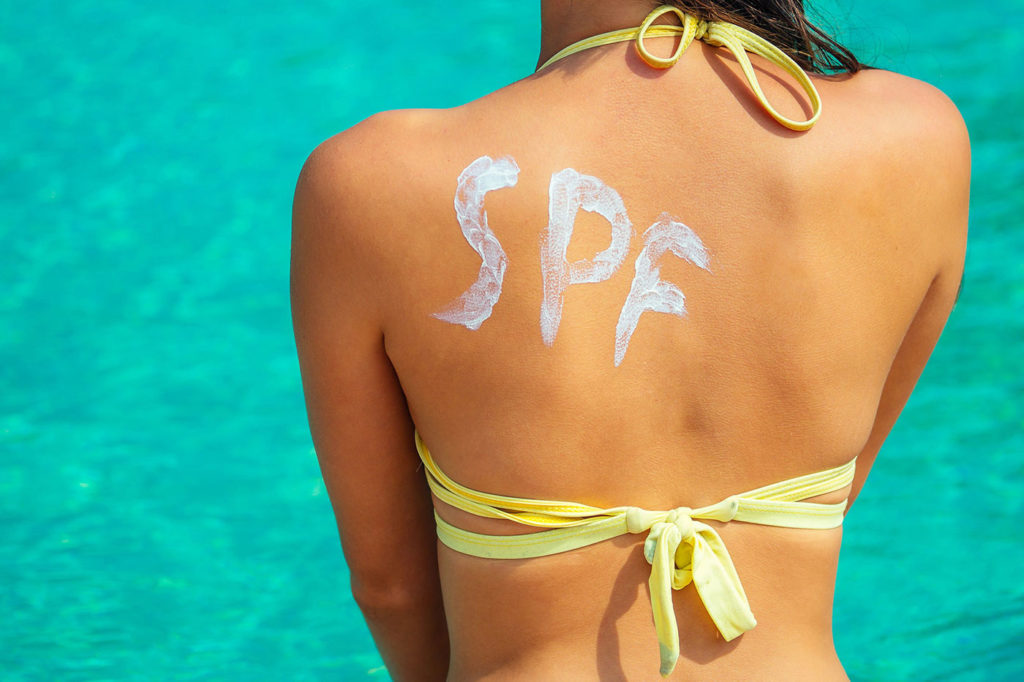Sunscreen 101
May 7, 2019
 If you have ever tried choosing a sunscreen lately, you may be overwhelmed by the buffet of sunscreens available at any store. Sunscreen is a key product for your anti-aging arsenal and to protect your skin.
If you have ever tried choosing a sunscreen lately, you may be overwhelmed by the buffet of sunscreens available at any store. Sunscreen is a key product for your anti-aging arsenal and to protect your skin.
The best type of sunscreen is the one you will use! I always tell my clients that if they like the feel, smell and texture of the sunscreen then they are more likely to wear it. So, feel free to choose the formula you like best—as long as it meets the SPF minimum and is broad-spectrum. All types of formulas are available to meet the needs of your skin and your lifestyle. Here are a few things to consider for choosing your perfect formula:
- Cream formulas work well for our clients with dryer skin and for the face.
- Hypoallergenic or sensitive formulas may work well for sensitive skin. For covering areas with hair—such as an exposed scalp or a man’s arms or legs—a gel formula may glide on easier. Sunscreen sticks neatly cover ears, noses, and under the eyes.
- Gels are good for hairy areas, such as the scalp or male chest. No one wants matted down hair, so I find gels are the best solution
- Sticks are good to use around the eyes. Eyes are one of the main areas of our face that are forgotten about. The eye area is so delicate and it should be a priority to protect it as well as always make sure your wear your perfect shades.
- Sprays are sometimes preferred by parents since they are easy to apply to kiddos. Be careful to not inhale the spray sunscreens as I would imagine they are not great for lungs. The main challenge with spray sunscreens is it is easy not to use enough to adequately cover the are especially on a windy beach. Be aware to never spray sunscreen directly on to your face and instead, spray the sunscreen into your hands and then apply to your face.
- Oil-free formulas work well for oily skin or breakout prone skin. They are lightweight and fast absorbing while providing hydration.
- Sport sunscreen is non-greasy, lightweight and water and sweat resistant. The biggest benefit is it is made not stay put and not run into your eyes. The formula is designed to be heavy-duty protection while being active outdoors but still allows your skin to breathe.
- Physical/Mineral sunscreen is the classic formula of lifeguards and dermatologists. The challenge is that it used to dry white. These are formulas of the past! More modern formulas use a technology that delivers a unique dry, clear finish. The physical formula is ideal for daily use.
Remember, a convenient application guideline is to apply one teaspoon of sunscreen to your face and scalp and to each arm, and two teaspoons to your torso and to each leg. For all ages, be generous when applying sunscreen—and reapply at least every two hours and after swimming or sweating. I prefer a palmful of product is recommended to adequately cover exposed skin areas. Enjoy the sun this summer and practice safe sun!





